The NHL Goalie Report is back! Poised to be better than ever, this series will cover all that matters most throughout 2022-23. Expect these writeups to showcase league leaders, highlight-reel saves, backups battling for starts, spotlight-worthy debuts, questionable calls, all-star performances, injury updates, and everything in between.
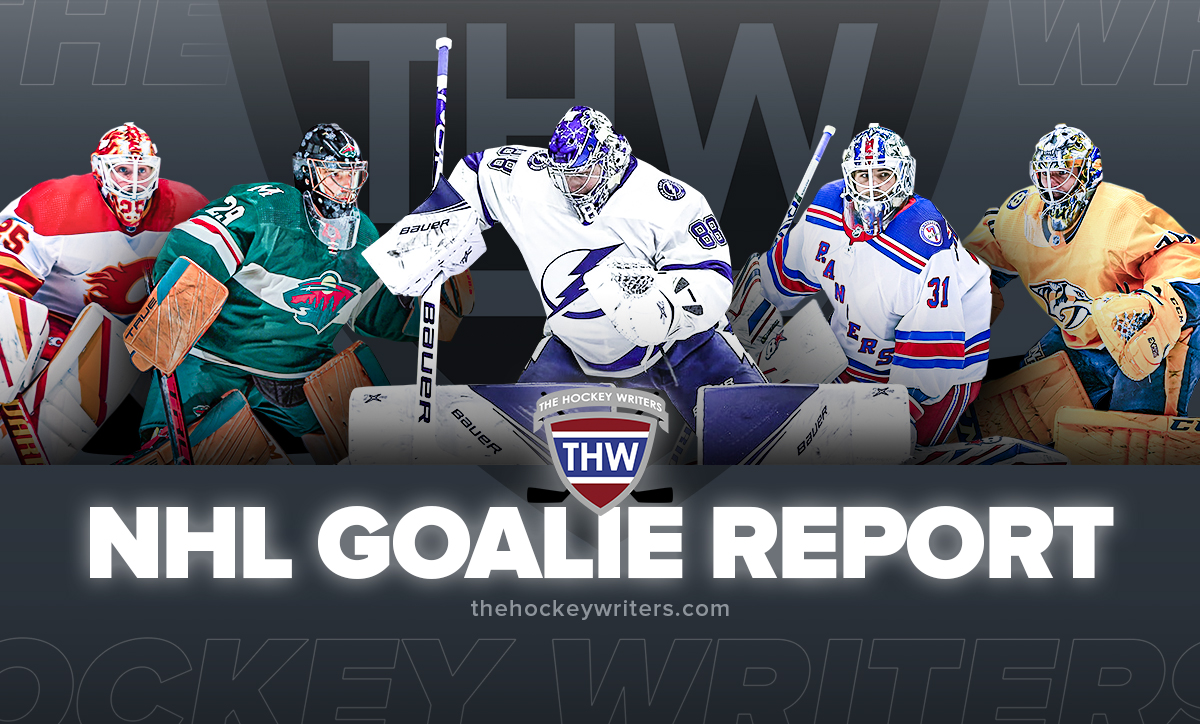
In anticipation of all the newsworthy netminder-centric stories you can look forward to this season, I’ll be publishing previews of the most pressing questions every franchise is facing heading into the year.
RELATED: NHL Goalie Report: 2022-23 Atlantic Division Preview
Heading out west, these are the curiosities surrounding the Central Division.
Arizona Coyotes
That the Arizona Coyotes ended 2021-22 with the league’s third-worst goals against per game (GA/G), a save percentage (SV%) of .897, a goals-against average (GAA) of 3.66, and a goals saved above expected per 60 (GSAx/60) of around -5.00 doesn’t tell the whole story.
In fact, against all odds, somehow their two most active goalies last year — Karel Vejmelka and Scott Wedgewood — still found a way to string together some pretty impressive showings.
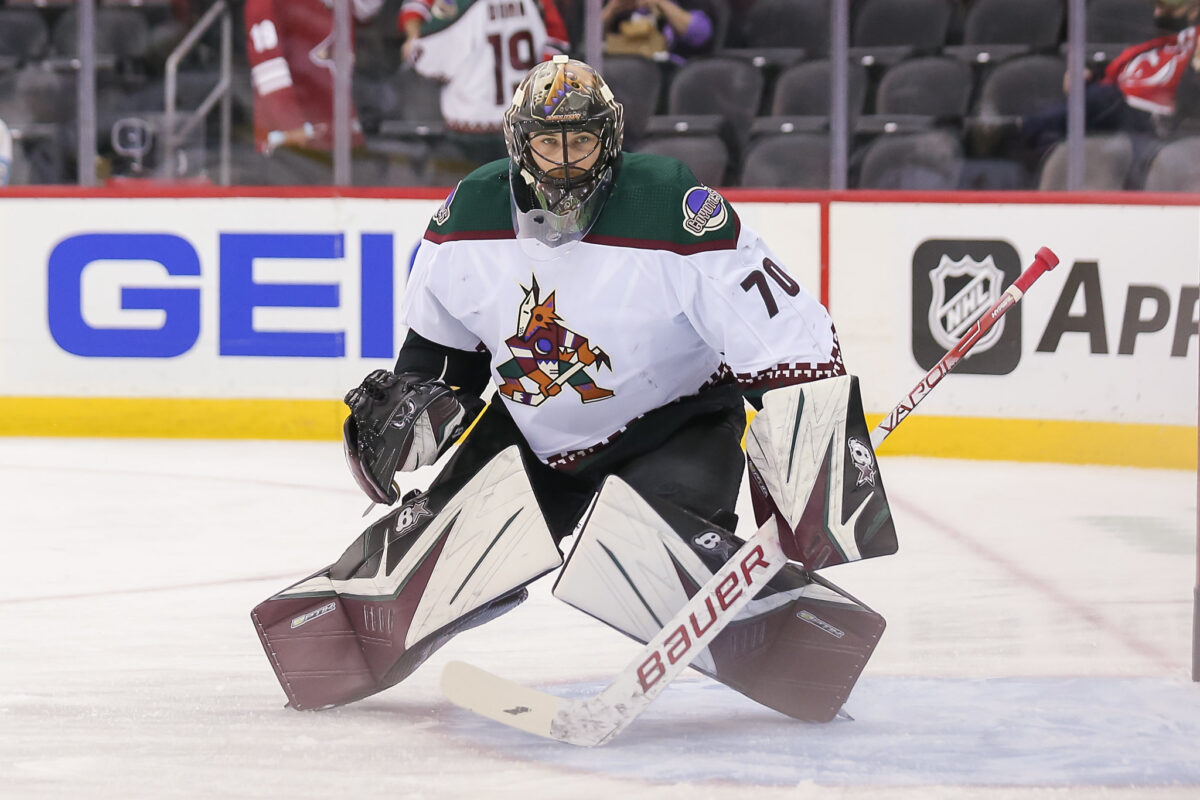
That said, it was simply unrealistic for Arizona to expect either to sustain enough success to compensate for the failures felt throughout the rest of a lineup that was only able to score an average of 2.51 goals per game (GF/G). Especially when the workload was dropped on rookie Vejmelka’s shoulders after Wedgewood was traded at last year’s deadline.
With an opportunity to own the net in a way that would turn the 26-year-old into the type of star that Arizona desperately needs in net, can Vejmelka improve upon his mostly underwhelming debut campaign?
Chicago Blackhawks
Heading into 2021-22, the Chicago Blackhawks weren’t yet ready to call themselves a rebuild. As evidenced by infusing future Hall of Famer Marc-André Fleury into a roster that was, at best, pretending to be a contender. Unfortunately for Chicago, addressing their problems would require more than just adding an all-star. Plus, following his impressive showing through 2020-21, the net could easily have been Kevin Lankinen‘s instead.
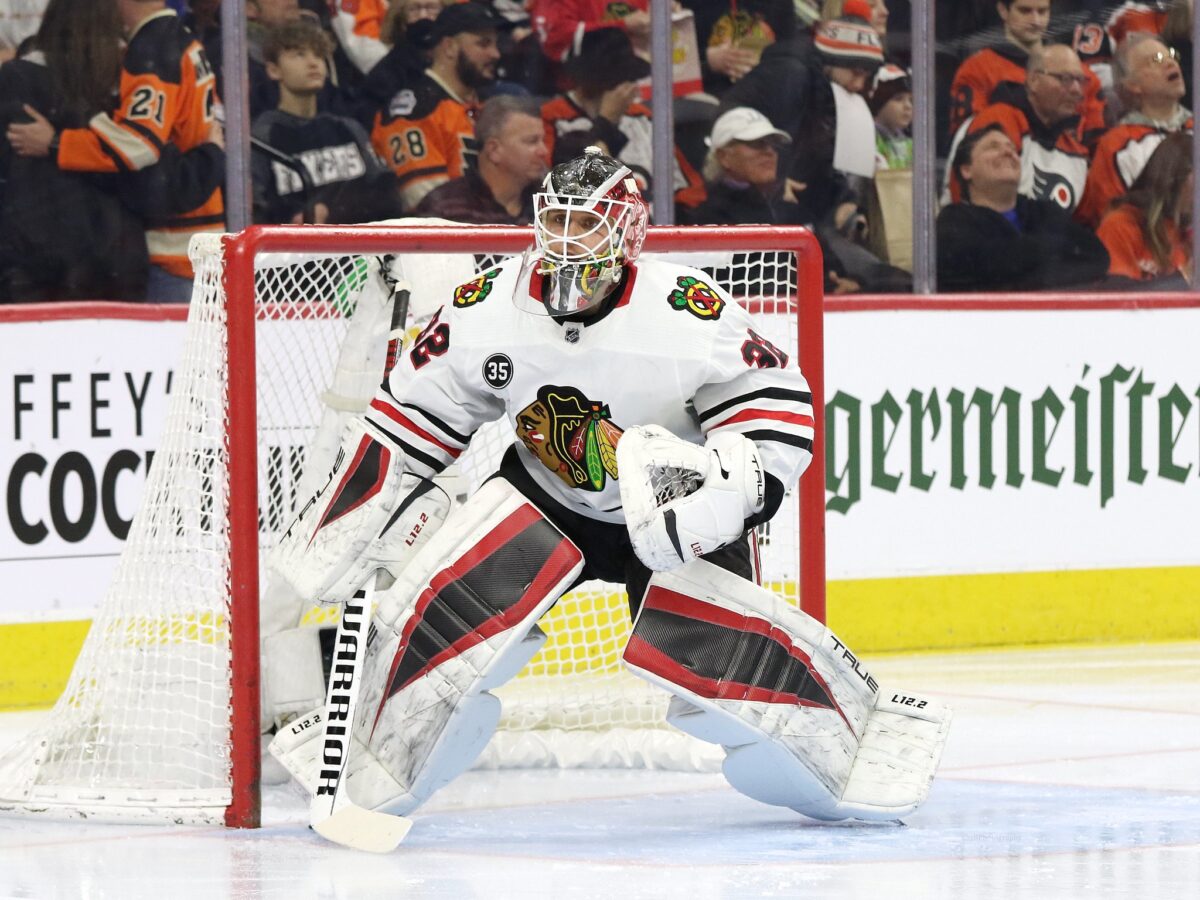
After a start that saw his GSAx/60 drop to the bottom of the league, Fleury found a way to turn things around earning a .908 SV%, 2.95 GAA, and four shutouts before being traded to a divisional rival late in the campaign.
That both Lankinen and Collin Delia then failed to elevate with the added ice time, each earning a SV% south of .900, made it even easier for the Blackhawks to watch them walk this past offseason. The club chose, instead, to go with a new look in net for 2022-23 by acquiring Petr Mrázek and Alex Stalock.
Will veterans Mrázek and Stalock do enough to steady this ship or will the rebuild look to rely on prospect Arvid Söderblom to swoop in and surprise?
Colorado Avalanche
Despite the 2022 Stanley Cup-winning Colorado Avalanche ending their campaign with a GF/A in the top 10 en route to their 56-19-7 campaign, they opted to re-assign their starter’s role by replacing Darcy Kuemper with Alexandar Georgiev. That’s after Kuemper set a stat line that included a record of 37-12-4, alongside his .921 SV%, 2.54 GAA, and five shutouts. Numbers that suggested a raise was due, rather than a departure.
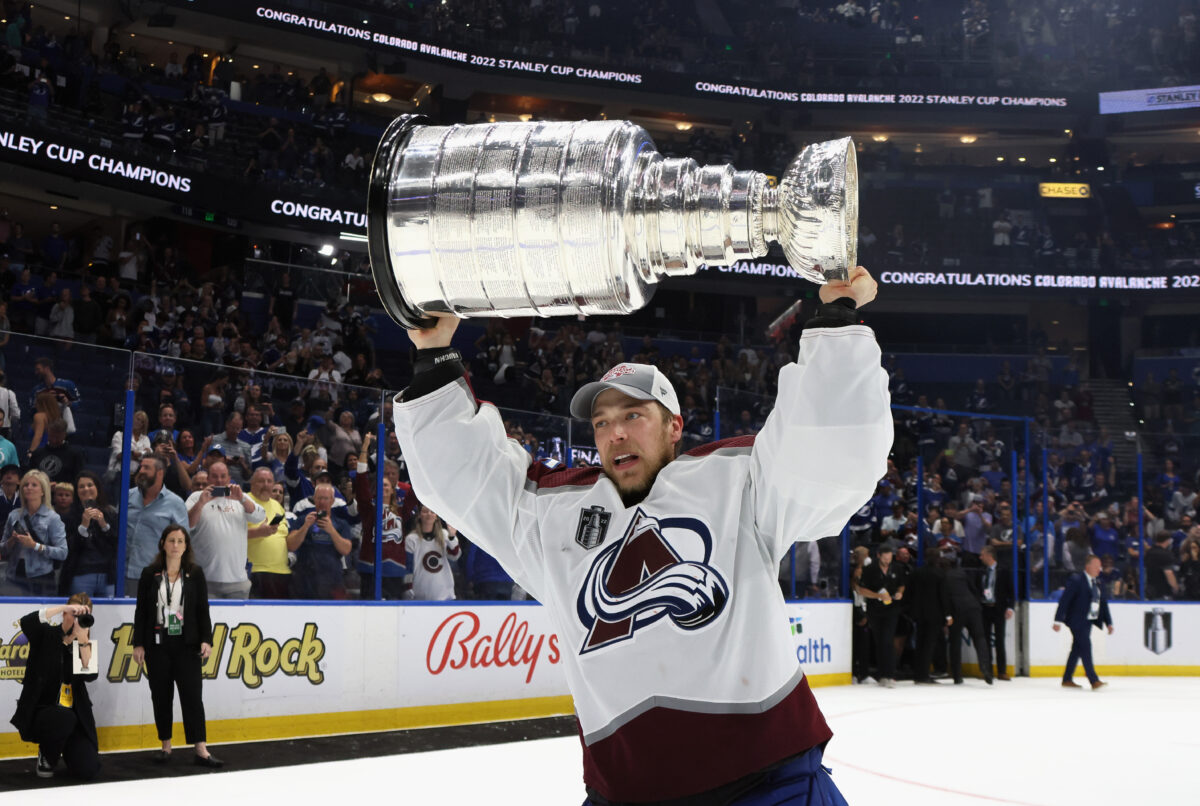
Meanwhile, Georgiev’s metrics were far more modest during his time backing up the 2022 Vezina Trophy winner on the New York Rangers. Georgiev ended the year with a 2.92 GAA, .898 SV%, and two shutouts. However, at only 26 years old heading into 2022-23, Colorado’s new starter has the age advantage over their former one.
Can Georgiev maintain the standards required to own the No. 1 role on a contender or will Colorado regret letting their recent Cup-winner go?
Dallas Stars
After bringing Braden Holtby into the mix for 2021-22, with Anton Khudobin mid-way through his most recent three-year term, who the Dallas Stars would be prioritizing between the pipes wasn’t as obvious at the start of the year as it became throughout it. When both Holtby and Khudobin failed to control the crease, Jake Oettinger was there to steal the No. 1 spot.
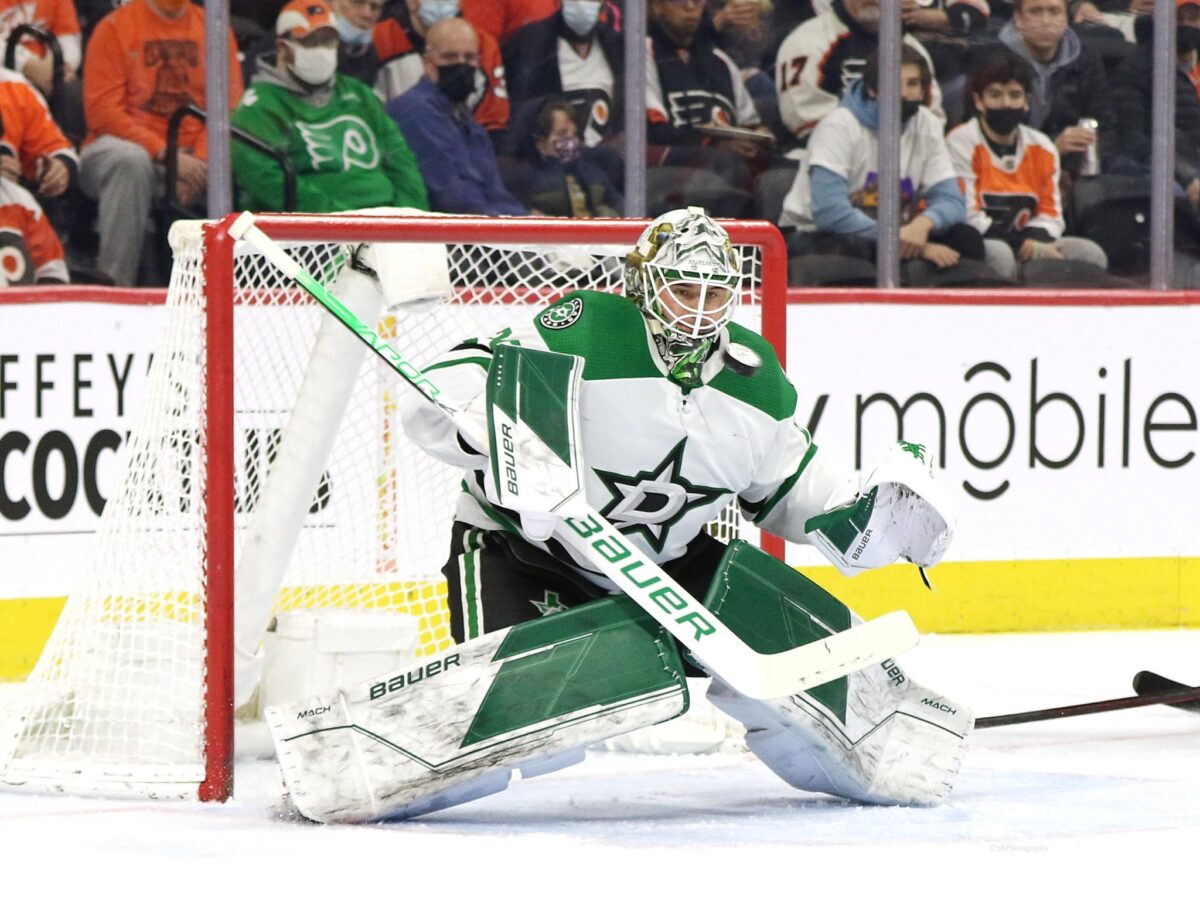
The 23-year-old’s numbers ended up being the best among of all four goalies who played for the Stars last season. Along with his one shutout, his 2021-22 stat line includes a 2.53 GAA and .914 SV%. Enough to earn him a healthy raise alongside the added commitment Dallas offered him this offseason.
“I made it clear to my representatives that I wanted to be in Dallas for a long time,” Oettinger said Friday. “If I could have signed an eight-year deal I would have. But you have to make it work for both sides, and I’m super happy with how the process went. Now I’m just happy to have that behind me and completely focus on hockey. It’s definitely a weight lifted off my shoulders. Now I’m just excited to get back and get to work.”
After ending the campaign by stopping 272 of 285 in the Stars’ First Round loss in the 2022 Stanley Cup Playoffs, can Oettinger continue to surpass expectations and help carry his team forward or will his play balance back down to earth?
Minnesota Wild
While it seemed like the Minnesota Wild were comfortably cruising through 2021-22, battling for top spot in the Central most of the way, they were obviously less than confident entering the postseason with Cam Talbot leading the charge. Which explains their efforts to acquire Fleury at the deadline.
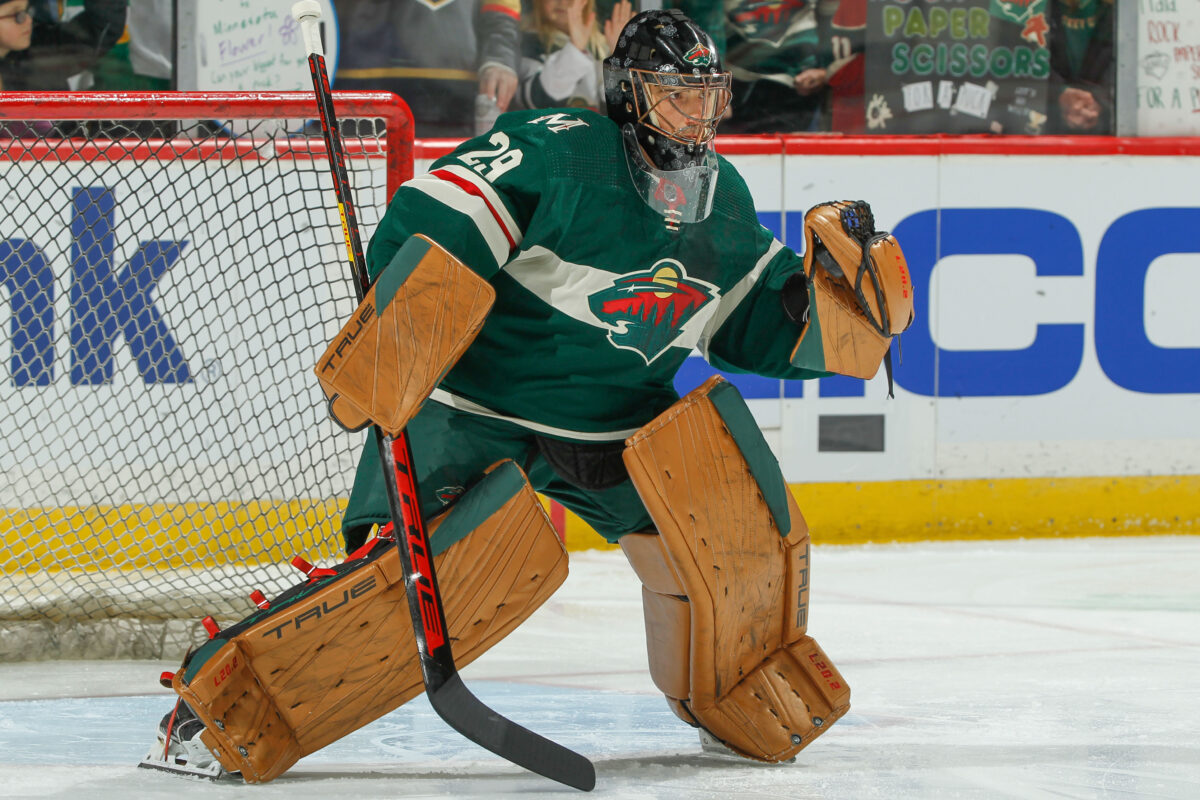
Maintaining the momentum gained following a slow start in Chicago, Fleury went on a run of 9-2-0 to conclude the campaign in Minnesota. Although Talbot played strong alongside him, going 8-0-3 within that same stretch, a downward trend prior to — during which he hit a SV% of below .880 — was cause for concern for the Wild.
Preferring to prioritize consistency and pedigree, Minnesota not only went with Fleury as their go-to throughout the playoffs but also re-signed the award-winner as they forced Talbot out this offseason.
With a contender in front of him from the get-go to start 2022-23, will 37-year-old Fleury be able to maintain his Vezina winning form the whole way through for the Wild?
Nashville Predators
Considering that the Nashville Predators haven’t come close to their 2017 Stanley Cup Final appearance ever since, having superstar netminder Pekka Rinne retire before 2021-22 could have made it an enough tougher mountain to climb moving forward. Lucky for Nashville, however, Juuse Saros was up to the task of taking over the spotlight.
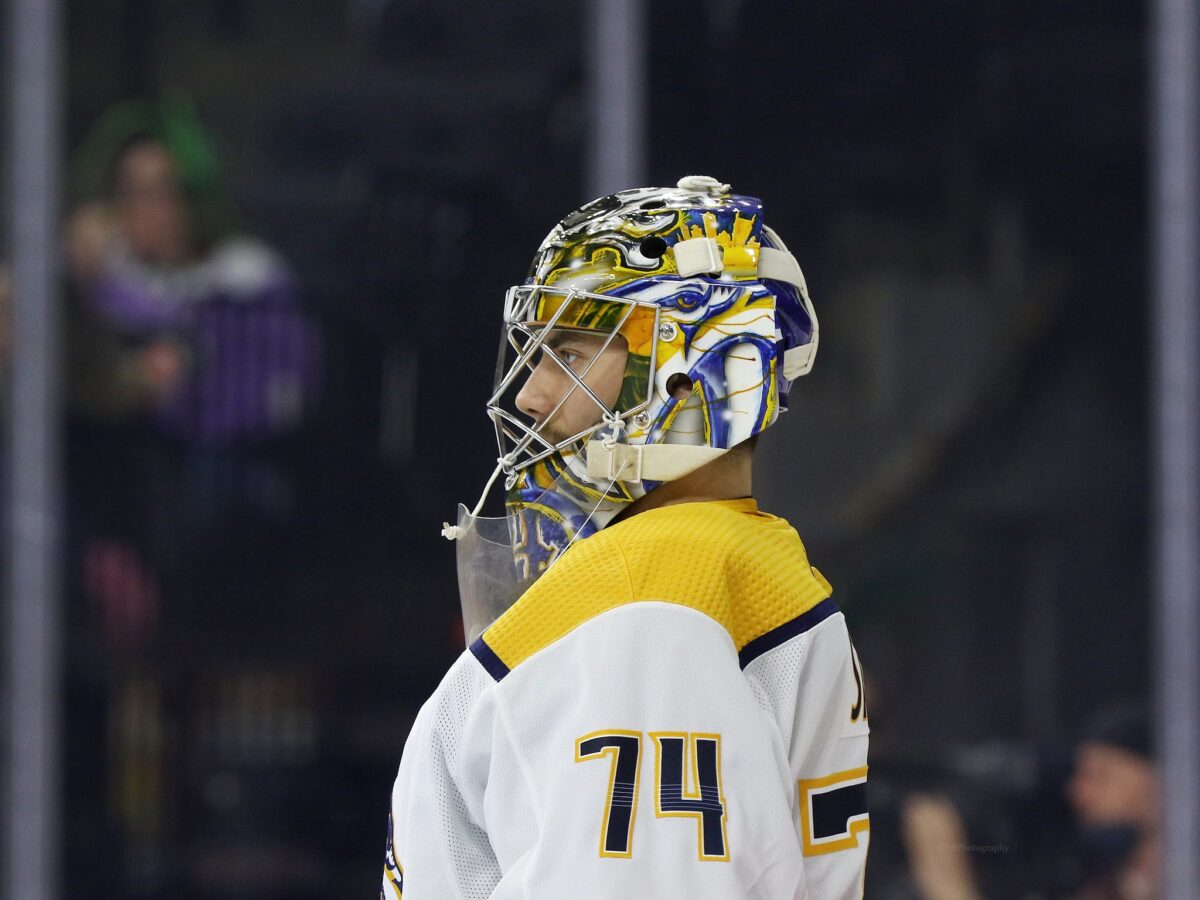
Managing the most games played among all NHL netminders, through the first season of his new four-year deal, Saros found his way into 67 contests in 2021-22. Making his .918 SV% and 2.64 GAA that much more impressive, given his ability to maintain such standards the whole way through. He added four shutouts to his totals, too.
Rounding out their roster this offseason, with David Rittich departing via free agency, the Predators acquired fellow Finland native Lankinen to back up Saros throughout 2022-23. However, safe to say that Lankinen is at a point in his career where he’s looking to start more than he sits.
Will Saros continue to force his way into as many games as possible or can newcomer Lankinen impress enough to affect that workload?
St. Louis Blues
As the St. Louis Blues continued to wait for Jordan Binnington to regain his Calder Trophy finalist form from 2018-19, Ville Husso decided to confuse matters for the club, as his play earned him more starts than Binnington was able to pile up through 2021-22.
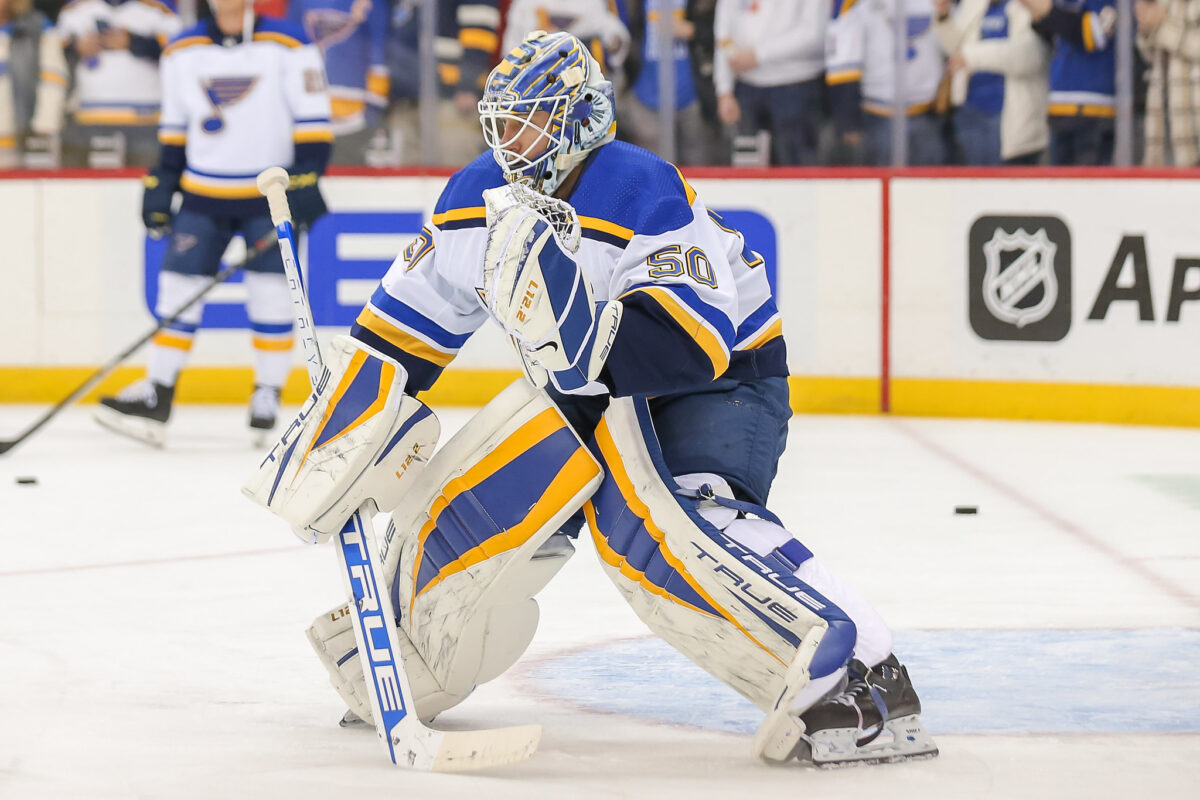
Comparing the stat lines of each, it’s obvious why Husso became the safe choice along the way. Husso’s .919 SV% and 2.56 GAA were superior to Binnington’s .901 SV% and 3.13 GAA. They both accumulated two shutouts, but the younger Husso won seven more games than Binnington was able to.
It would have seemed that St. Louis had their next starter lined up, yet Binnington’s $6 million per through 2026-27 got in the way of revising the plan. Instead, Husso was traded this past summer and Thomas Greiss was brought in as Binnington’s new backup.
Can the Blues count on Binnington answering the wake-up call and returning to form or will they be facing more tough goaltending decisions next offseason?
Winnipeg Jets
What makes the fact that the Winnipeg Jets missed the 2022 Stanley Cup Playoffs even more difficult to digest, is that they are supposed to have one of the best goalies in the game — Connor Hellebuyck. Unfortunately, like the rest of Winnipeg’s roster, Hellebuyck underperformed more often than not through 2021-22.
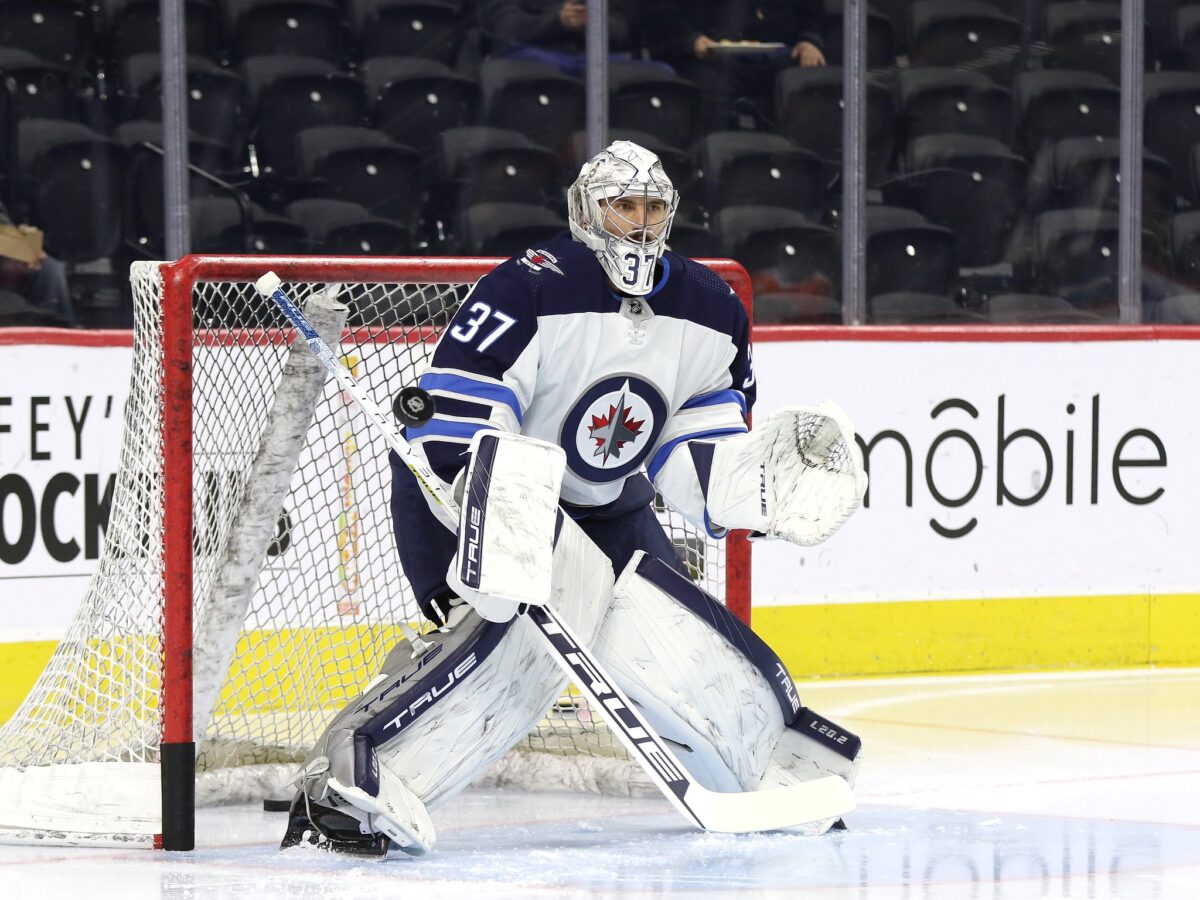
In fact, Hellebuyck regressed in every possible way last season, ending the year with a .910 SV%, 2.97 GAA, and four shutouts, along with a record of 29-27-10. What might be considered decent numbers for others are some of the worst this former Vezina winner has ever seen. Yet, no one should doubt his ability to bounce back, especially if he has his way and gets into far more games than he’s forced to watch.
Will signing Rittich as their new No. 2 prove to be a meaningless move for Winnipeg, with Hellebuyck earning his way into far more games than he’s forced to watch in 2022-23?
Who Will Be the Central’s Most Clutch Netminder?
Movement within the Central Division has created a mixed bag of familiarity and fresh faces among goaltending groups heading into 2022-23, with every lineup revising that part of their roster in some way. Whether it was to the degree of designing a new duo or merely swapping out their backup, every Central team is poised to begin the season with a new tandem in net.
RELATED: Marc-Andre Fleury’s Case as a Hall of Famer
Although the biggest names still appear to dominate the headlines heading into the year, will it be an accomplished veteran that returns to form or can a newcomer take over the spotlight in the Central?
